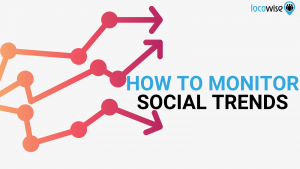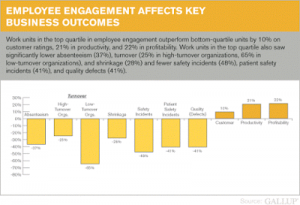Want to take advantage of a growing mobile audience this holiday season? It’s not too late. Columnist Brent Hieggelke shares his advice.

With the holiday season quickly approaching, retailers are putting the finishing touches on digital properties, from mobile websites to native apps, striving to cash in on mobile’s growing influence.
As mentioned in my previous column, digital interactions will influence 50% of in-store sales by the end of 2014 – up from 36% in 2013 – with smartphone adoption accounting for the majority of that growth.
The holiday season is when retailers make it or break it, accounting for anywhere from 20-40 percent of a retailer’s annual sales according to the National Retail Foundation.
With that urgency and importance in mind, and our purview into what some of the world’s largest retailers are focused on this holiday season, we thought we’d offer advice on the six latest and greatest mobile innovations that retailers still have time to adopt to better serve their customers and get cash registers ringing.
1. Drive Deeper Interaction & User Insight With Interactive Notifications
In the past, app users either swiped a push notification to respond, or ignored it in the moment to possibly remember it later.
This basic form of push messaging drives four times greater engagement and doubles the retention rate for app users that receive them versus those that don’t, in addition to eclipsing email marketing results with some brands experiencing 50% higher open rates, ten times higher click-through rates and even 1200% greater conversion.
However, the basic push notification format offers little opportunity to learn about those that don’t respond. In addition, everyone that does swipe-through is treated exactly the same way, arriving at the same destination.
Interactive notifications with iOS 8 (rich notifications in Android and Fire OS) include action buttons within push messages, giving consumers greater choice and multiple paths to engage in effortless interactions. These interactions offer immediate feedback into what they want more or less of and how you can best engage with them in the moment and over time.

While basic push messaging drives higher response and conversion rates than traditional marketing channels, it largely relies on users’ immediate response or users’ remembering the message and opening the app later as a result.
With a simple Remind Me Later button, businesses can capture and cultivate user interest and send appropriately-timed reminder notifications to drive higher conversions.
In addition, understanding users’ affinities for certain types of notifications and content at the messaging-level offers a continual stream of fresh and dynamic user-centric insight.
In-app preference centers, while still important, are typically levels deep within apps and only reach a portion of your audience with surface-level controls (e.g., weekly vs. daily deals, men’s vs. women’s clothing).
In-app behaviors offer a wealth of user insight, but are dependent on ongoing app use and cyclical, developer-led tagging of app pages.
With dozens of pre-defined action buttons and customizable ones, even non-technical staff can launch campaigns that generate substantially more user insight than best practice approaches deliver today — from users’ initial button taps and clicks on deep-linked app and mobile web pages, to their response to follow-on automation campaigns.
2. Use Mobile Marketing Automation To Create Responsive Experiences That Move Customers Closer To Conversion
Marketers can more easily react to campaign responses and other customer behaviors — including inactivity — by defining triggers and messaging sequences spanning push, in-app messages and deep-linked landing pages.
As one example, apps can more effectively on-board new users by automatically triggering a welcome message that highlights key features the day after first app open. Subsequent messages can be tailored to focus on different app functionality based on users’ interactions with the first message — creating an adaptive, multi-step welcome series.
Beyond customers’ responses or non-responses informing the next message they receive, timing delays and frequency limits help ensure a relevant and responsible approach to driving engagement and fine-tuning the customer experience.
For example, a business might trigger a free shipping offer two days after a shopping cart is abandoned, but avoid sending it more than once per-month per-customer.
Automation personalizes messaging experiences based on where the customer is in their shopper journey, using conditional automation rules and any combination of segmentation attributes such as user preferences, in-app behaviors, and responses to interactive push buttons and deep-linked landing pages. It builds off of prior push relevancy efforts — including user controls in preference centers and segmentation and targeting — to help respond to users’ actions in real-time.
3. Leverage Good Push To Aid In Acquisition, Not Just Engagement & Retention
The requirements of downloading an app and opting in to receive push notifications have always meant the channel is more oriented to customer engagement and retention.
Now, through a Share action button as an option to use with interactive push, users can easily amplify relevant messages through their social channels in a few taps, aiding in acquisition efforts as their friends and followers see the value of the app and its messaging and consider downloading it themselves.

Message response is a great indicator of customer intent, but when users socially share or add items to wish lists or shopping carts, they show even greater signals of intent and loyalty.
4. Take Advantage Of In-App Message Centers & Widgets
Not every push requires a shove and not every message is appropriate to light up your users’ device screens.
Some messages — video highlights, mobile coupons, free downloads, tutorials — are more beneficial when stored where users can easily return later to consume the content at their convenience. In-app message centers are ideal for these categories of content.
In-app message centers also have the benefit of reaching your entire app audience — not just those opted into push— in addition to reaching targeted audience segments with rich, multimedia content. With badge updates on app icons, users receive a very visible but more passive indication that new content is waiting for them in the app.
With iOS 8 and Android, widgets offer new and extremely valuable real estate, as consumers can add an app’s widget to the Today View of the iOS 8 Notification Center or anywhere in the Android experience for the ultimate accessibility. Widgets have potential to usher in a land rush as brands compete to offer consumers dynamic, bite-sized content to earn their place in this new owned-media bonanza.

5. Use Dwell Time To Reveal Shopping Patterns & Preferences
When customers enter a store they can trigger a greeting from your application and as they make their way through the store, with beacons detecting their proximity to certain displays and triggering relevant messages.
By studying the data from these in-store interactions, retailers can gain valuable insight into what is working well in the store, as well as what departments interest the consumer most.
At the individual level, this information can be used both immediately and down the line to engage consumers with information they find appealing — for instance, retargeting shoppers that spend two minutes or longer at the winter apparel display for later cross-sell campaigns.
6. Maximize Push & Location-Sharing Opt-In Rates Through Value-Focused Interactive Walkthroughs
To take advantage of most all of these mobile innovations, retailers need to maximize the number of users opted into push messaging and location-sharing.

The majority of apps just serve up standard iOS language on first app open before users have had the chance to explore the value of the app or any explanation of the value of opting in.
This is why we see such a massive delta between apps achieving the highest opt-in rates compared to those at the low-end.
A better approach is to describe the value of opting in through interactive walkthroughs shown on first app open. Victoria’s Secret does a nice job explaining the value of opting into both push notifications and location-sharing.

You can also get creative and think about other places in the app or customer journey where asking for push and location opt-in might be more contextually relevant than during the initial app open, such as the first time users try to access functionality leveraging these opt-ins.
Make Your Holidays Very Merry With Mobile
Mobile apps offers retailers a direct method of engaging consumers and learning more about them than ever before, in addition to being a core way to convert window-shoppers into buyers.
By studying consumer behavior to reveal personal preferences, utilizing segmentation and automation to understand and respond to their context and interest, and reengaging customers on their terms, retailers have the tools to achieve greater success this holiday season.
Marketing Land – Internet Marketing News, Strategies & Tips
(380)





